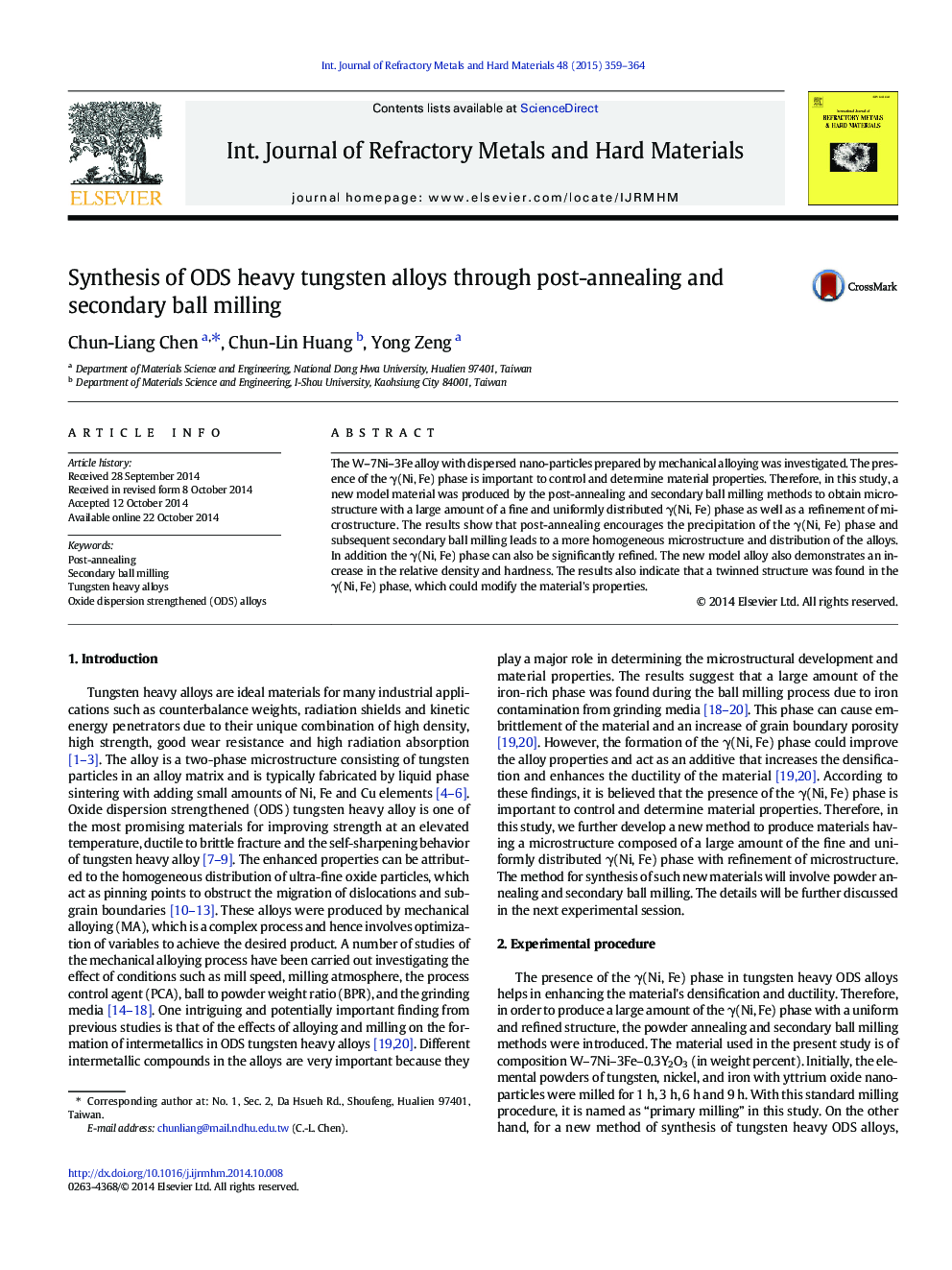| Article ID | Journal | Published Year | Pages | File Type |
|---|---|---|---|---|
| 1603119 | International Journal of Refractory Metals and Hard Materials | 2015 | 6 Pages |
•γ(Ni, Fe) phase is important to control and determine material properties.•A refined γ(Ni, Fe) and uniform microstructure obtained by secondary milling.•γ(Ni, Fe) phase formation through subsequent annealing is facilitated.•Twinned structure of γ(Ni, Fe), providing poor paths for vacancy diffusion
The W–7Ni–3Fe alloy with dispersed nano-particles prepared by mechanical alloying was investigated. The presence of the γ(Ni, Fe) phase is important to control and determine material properties. Therefore, in this study, a new model material was produced by the post-annealing and secondary ball milling methods to obtain microstructure with a large amount of a fine and uniformly distributed γ(Ni, Fe) phase as well as a refinement of microstructure. The results show that post-annealing encourages the precipitation of the γ(Ni, Fe) phase and subsequent secondary ball milling leads to a more homogeneous microstructure and distribution of the alloys. In addition the γ(Ni, Fe) phase can also be significantly refined. The new model alloy also demonstrates an increase in the relative density and hardness. The results also indicate that a twinned structure was found in the γ(Ni, Fe) phase, which could modify the material's properties.
